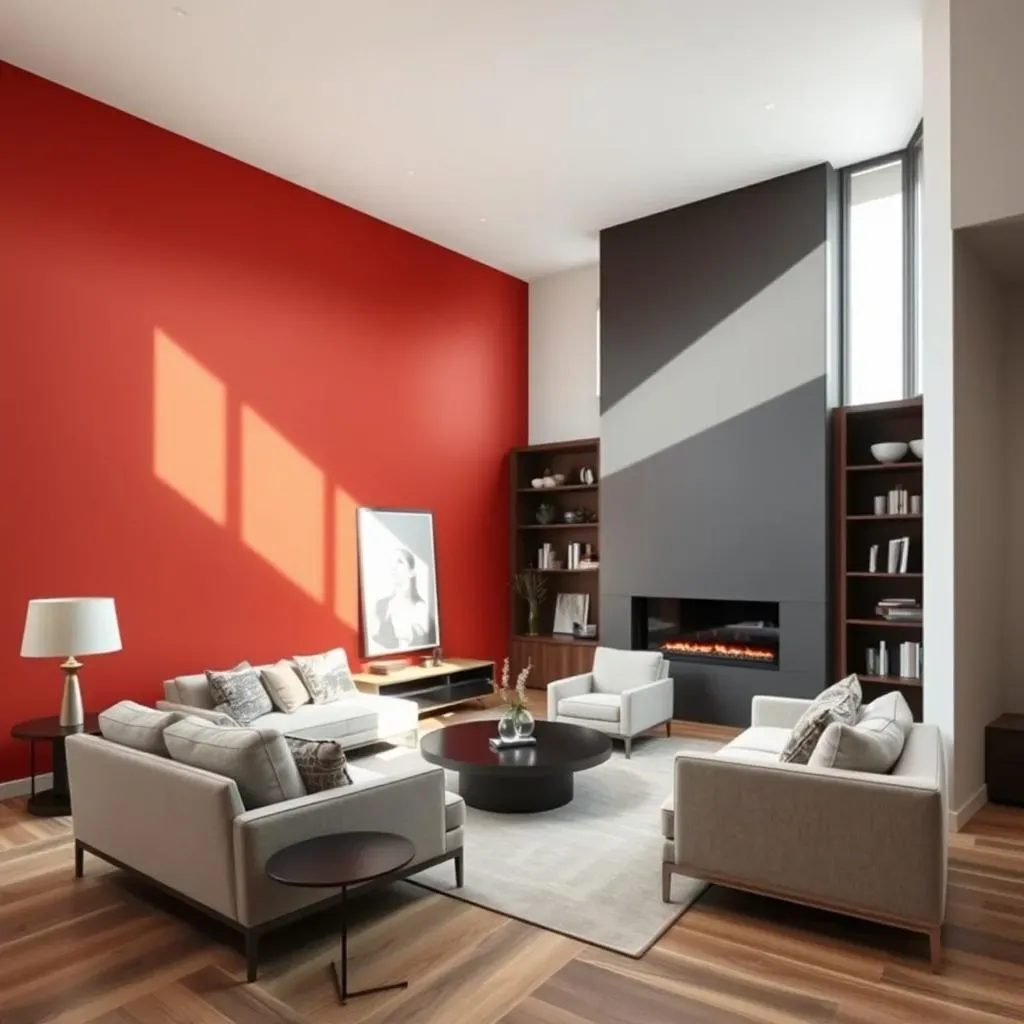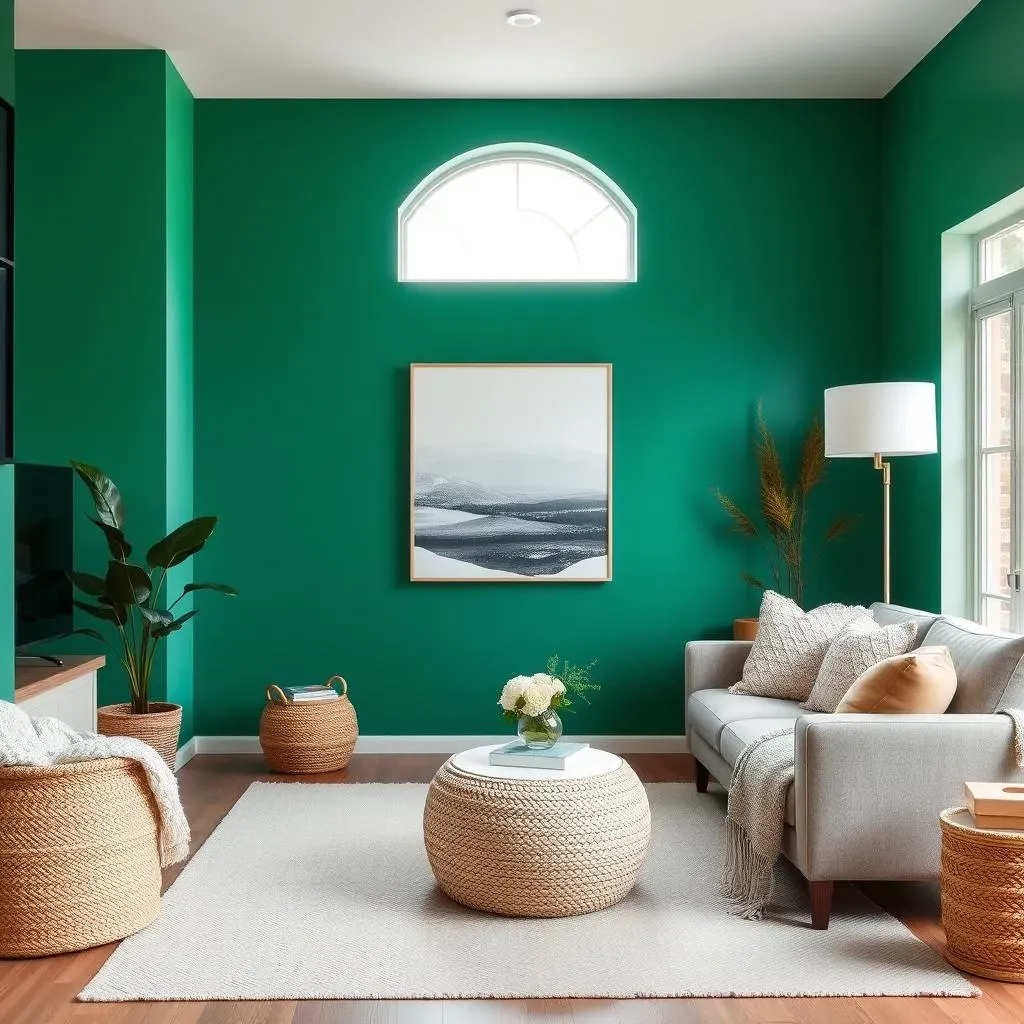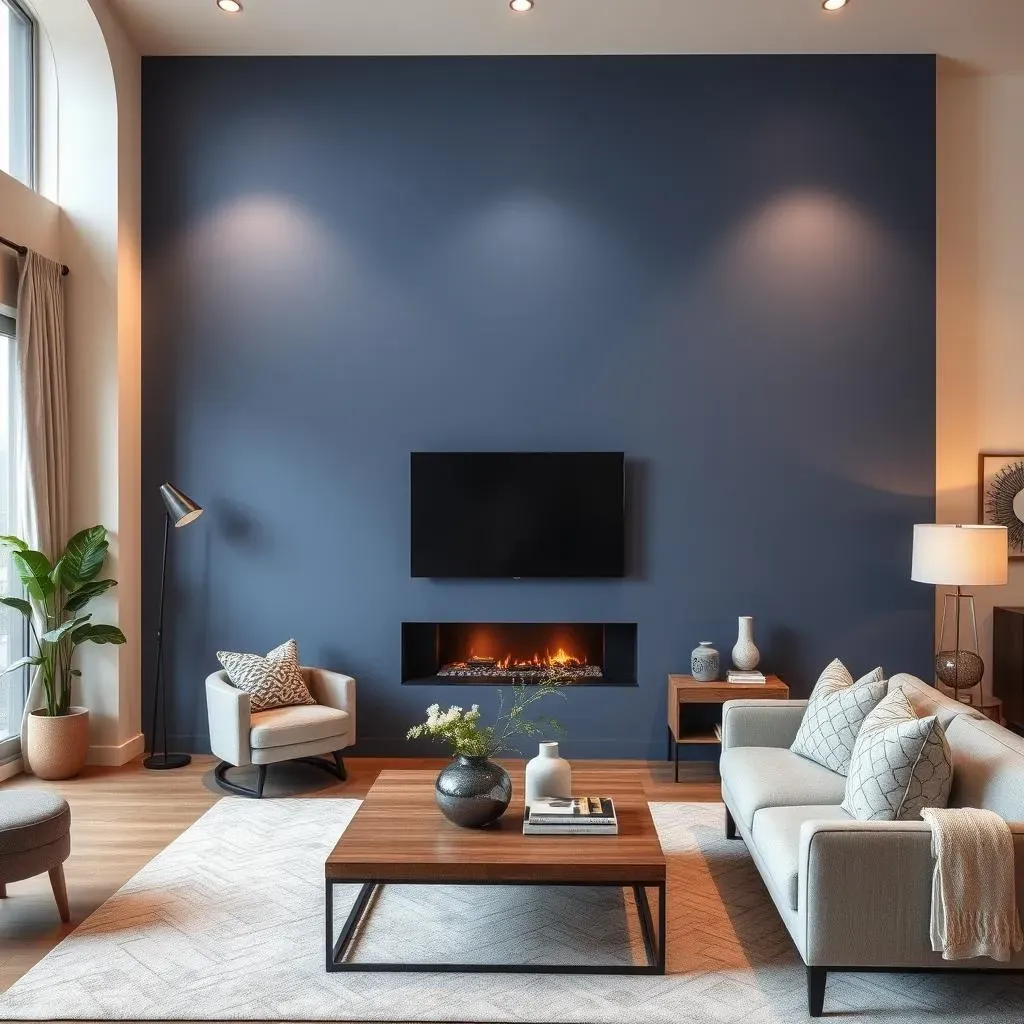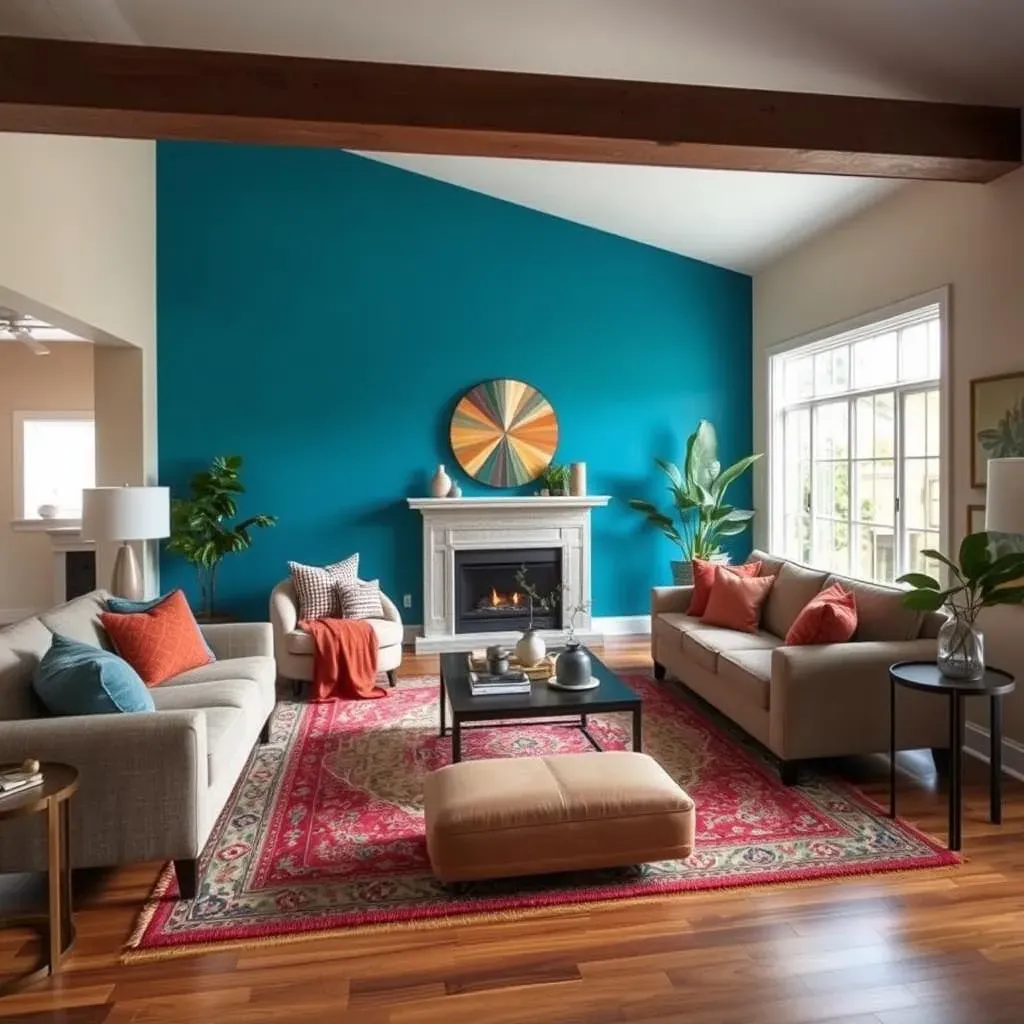Table of Contents
Ever stared at a room and felt like it was missing that certain *something*? An accent wall might be just the ticket! It's a fantastic way to inject personality, drama, or a pop of color into any space without committing to a full room makeover. But here's the million-dollar question: what color should I paint my accent wall? Choosing the wrong hue can throw off the entire vibe, making your room feel unbalanced or even smaller. Don't worry, though! This guide will walk you through the process of selecting the perfect accent wall color, from understanding your room's existing palette and lighting to considering the emotional impact of different colors. We'll explore how to choose the right wall, how to coordinate your decor, and even discuss some common pitfalls to avoid. By the end, you'll be armed with the knowledge to transform your space with a stunning accent wall that reflects your unique style and enhances your home's overall aesthetic.
Understanding the Purpose of Your Accent Wall

Understanding the Purpose of Your Accent Wall
Creating a Focal Point
Let's be real, sometimes a room just feels…blah. An accent wall swoops in like a superhero to save the day. Its main mission? To create a focal point. Think of it as directing the eye. Instead of your gaze wandering aimlessly around the room, it lands on that one striking wall. This is especially useful in rooms that lack natural architectural interest. Got a living room with boring, boxy walls? Bam! An accent wall instantly adds visual interest and gives the room a sense of purpose.
It's not just about aesthetics, though. A well-placed accent wall can actually define the function of a space. For instance, in a bedroom, painting the wall behind your headboard a bold color instantly designates that area as the sleep zone. In a living room, it could highlight a fireplace or a media center, drawing attention to the room's entertainment hub. It's all about intentional design and creating a visual hierarchy within your space.
Setting the Mood and Tone
Color psychology is a real thing, folks! The colors we surround ourselves with can seriously impact our mood and emotions. An accent wall is a fantastic way to leverage this to create the desired atmosphere in a room. Want a cozy and inviting living room? Warm, earthy tones like terracotta or deep reds can do the trick. Aiming for a calming and serene bedroom? Cool blues and greens are your best friends. The accent wall color becomes a powerful tool to shape the emotional landscape of your space.
Think about the feeling you want to evoke in the room. Is it energy and excitement? Sophistication and elegance? Relaxation and tranquility? Once you've identified the desired mood, you can start exploring colors that align with that feeling. Don't be afraid to experiment and push boundaries, but always keep the overall goal in mind. After all, your accent wall should be a reflection of your personality and a catalyst for creating the perfect ambiance in your home.
Choosing the Right Wall and the Right Color for Your Accent Wall

Choosing the Right Wall and the Right Color for Your Accent Wall
Consider the Room's Architecture
Not all walls are created equal, especially when it comes to accent walls. The best wall is usually the one that already has some inherent architectural interest. Think about walls with fireplaces, built-in bookshelves, large windows, or interesting nooks. These features naturally draw the eye, and an accent color will only enhance their appeal. If your room is lacking in architectural details, you can still create a focal point by choosing a wall that's visually prominent, like the one opposite the entrance or the headboard wall in a bedroom.
Avoid walls that are broken up by too many doors or windows, as the accent color might feel disjointed and choppy. Also, steer clear of small, awkward walls that won't have enough visual impact to justify the effort. The goal is to choose a wall that's large enough to make a statement but not so large that it overwhelms the room. It's a delicate balance, but with a little careful consideration, you can find the perfect canvas for your accent color masterpiece.
Understanding Natural and Artificial Light
Lighting is everything, people! The way light interacts with color can dramatically alter its appearance, so it's crucial to consider both natural and artificial light sources when choosing your accent wall color. Colors tend to look warmer and more vibrant in natural light, while artificial light can sometimes cast a cooler or more yellow hue. Before committing to a color, test it out by painting a large swatch on the wall and observing it throughout the day and night.
Pay attention to how the color changes under different lighting conditions. A color that looks stunning in the morning sunlight might appear dull and lifeless under artificial light in the evening. If your room has limited natural light, opt for lighter, brighter colors that will reflect the available light and make the space feel more open and airy. Conversely, if your room is flooded with natural light, you can afford to go bolder and experiment with darker, more saturated colors. Remember, lighting is your best friend (or worst enemy) when it comes to color, so use it to your advantage!
Lighting Type | Color Effect | Color Recommendations |
|---|---|---|
Natural Light | Enhances warmth and vibrancy | Versatile, most colors work well |
Artificial Light (Warm) | Can make colors appear more yellow | Cooler tones to balance the warmth |
Artificial Light (Cool) | Can make colors appear duller | Warmer tones to add vibrancy |
Coordinating with Existing Décor and Color Palette
Your accent wall shouldn't exist in a vacuum. It needs to play nicely with the rest of your room's décor and color palette. Take a close look at your furniture, flooring, and accessories. What are the dominant colors and textures? Your accent wall should complement these elements, either by creating a harmonious blend or a striking contrast. If your room is already filled with bold patterns and colors, consider a more neutral accent wall to provide a visual break. On the other hand, if your room is mostly neutral, a vibrant accent wall can add a much-needed pop of personality.
Don't be afraid to use a color wheel to explore different color combinations. Complementary colors (those opposite each other on the wheel) can create a bold and dynamic look, while analogous colors (those next to each other) offer a more subtle and cohesive feel. Ultimately, the goal is to create a space that feels balanced and intentional. Your accent wall should be an integral part of the overall design, not an afterthought. It's about creating a cohesive story where every element works together to tell a visually compelling tale.
Styling and Decorating Around Your Accent Wall Color

Styling and Decorating Around Your Accent Wall Color
Creating Cohesion with Accessories
Alright, you've got your killer accent wall color – now what? Don't let it just hang there like a lonely wallflower! The key to a successful accent wall is to integrate it seamlessly with the rest of your décor. This is where accessories come in. Think throw pillows, blankets, rugs, artwork, and even smaller decorative items. The goal is to sprinkle hints of your accent wall color throughout the room to create a sense of visual harmony. It doesn't have to be a perfect match, but there should be a clear connection between the wall and the other elements in the space.
For example, if you've painted your accent wall a deep teal, consider adding teal throw pillows to your sofa, a teal-patterned rug under your coffee table, or even a few teal-colored vases on your shelves. These small touches will tie everything together and make your accent wall feel like a natural extension of the room's overall design. Remember, it's all about creating a cohesive and intentional look, where every element works together to enhance the overall aesthetic.
Balancing with Neutral Tones
An accent wall can be a bold statement, but it's important to balance that boldness with neutral tones to prevent the room from feeling overwhelming. Think of neutral colors like white, gray, beige, and cream as the supporting cast to your accent wall's star performance. These colors provide a visual break and allow the accent wall to truly shine without overpowering the space. Use neutral tones on your furniture, flooring, and other large surfaces to create a calming backdrop that complements the accent wall.
For instance, if you've chosen a vibrant red for your accent wall, consider pairing it with a light gray sofa, a cream-colored rug, and white curtains. These neutral elements will soften the intensity of the red and create a more balanced and inviting atmosphere. Remember, it's all about creating a harmonious blend of bold and subtle elements, where the accent wall adds a pop of excitement without disrupting the overall sense of calm and tranquility. A good balance ensures the accent wall enhances, not overwhelms, the room.
Accent Wall Color | Complementary Neutral Tones |
|---|---|
Navy Blue | Cream, Light Gray, Beige |
Emerald Green | White, Taupe, Pale Yellow |
Mustard Yellow | Gray, Charcoal, Off-White |
Creating Contrast with Textures
Texture is your secret weapon for adding depth and visual interest to a room, especially when working with an accent wall. Don't just focus on color – think about how different textures can complement and enhance your accent wall. A textured accent wall can add a tactile dimension to the space, making it feel more inviting and engaging. Consider using materials like wood paneling, brick, stone, or even textured wallpaper to create a unique and eye-catching feature.
If your accent wall is a solid color, you can still incorporate texture through your accessories. Think about adding a chunky knit throw blanket to your sofa, a woven rug under your coffee table, or a collection of textured vases on your shelves. These tactile elements will add depth and dimension to the room, creating a more layered and visually appealing space. Remember, texture is just as important as color when it comes to creating a well-designed and inviting home.
Avoiding Common Accent Wall Color Mistakes and Exploring Alternatives

Avoiding Common Accent Wall Color Mistakes and Exploring Alternatives
Ignoring the Undertones
let's talk about undertones. This is where things can get tricky, but trust me, understanding undertones is crucial to avoiding accent wall disaster. Every color has an undertone – a subtle hint of another color that can significantly impact how it looks in a room. For example, a gray paint can have blue, green, or even pink undertones. If you choose a gray with a blue undertone and pair it with warm beige furniture, the colors will clash and the room will feel off. The key is to identify the undertones in your existing décor and choose an accent wall color with complementary undertones.
The easiest way to do this is to compare paint swatches side-by-side in different lighting conditions. You'll start to notice the subtle differences and identify the underlying hues. Don't be afraid to ask for help at your local paint store – the experts there can guide you through the process and help you choose the right color with the right undertones for your space. It’s a small detail that makes a huge difference.
Forgetting to Test Paint Samples
Seriously, don't even think about slapping paint on your accent wall without testing it first! This is non-negotiable. Colors look completely different on a tiny paint chip than they do on a large wall, especially under different lighting conditions. Always, always, always buy a sample pot of your chosen color and paint a large swatch on your wall. Live with it for a few days, observing how it looks in the morning, afternoon, and evening. This is the only way to truly know if you're going to love the color in your space.
Paint your sample swatch on the wall you plan to paint as the accent wall. Observe the color throughout the day and evening. Take notes on how the color changes in different lighting conditions. This will help you avoid any unpleasant surprises down the road. It is a lot easier to repaint a small sample area than an entire wall!
Overdoing It with Multiple Accent Walls
One accent wall is a statement; multiple accent walls are a cry for help! Resist the urge to paint every wall a different color, as this can create a chaotic and overwhelming space. The whole point of an accent wall is to create a focal point, and if you have multiple accent walls, they'll just compete for attention and the room will lose its sense of balance. Stick to one accent wall per room, and make sure it's a wall that deserves the spotlight.
If you're really itching to add more color to your space, consider using accessories instead. Throw pillows, rugs, artwork, and even plants can add pops of color and visual interest without overwhelming the room. Remember, less is often more when it comes to interior design. It's about creating a space that feels balanced, intentional, and visually appealing, not a circus of colors and patterns.
Problem | Solution |
|---|---|
Ignoring Undertones | Compare paint swatches, ask for expert advice. |
Skipping Paint Samples | Always test paint samples on the wall. |
Multiple Accent Walls | Stick to one accent wall, use accessories for color. |
Exploring Alternatives to Paint
so maybe painting isn't your thing. Or maybe you're just looking for something a little more unique and interesting. The good news is that there are tons of alternatives to paint when it comes to creating an accent wall. Think about using wallpaper, wood paneling, brick, stone, or even fabric to add texture and visual interest to your space. These materials can create a stunning and eye-catching feature that's sure to impress.
Wallpaper is a great option if you want to add pattern and color to your room without the commitment of painting. Wood paneling can add warmth and texture, while brick and stone can create a rustic and industrial vibe. Fabric is a more unconventional choice, but it can add a soft and luxurious feel to the space. Ultimately, the best alternative to paint is the one that best reflects your personal style and enhances the overall aesthetic of your home. Don't be afraid to get creative and experiment with different materials to create a truly unique and personalized space.
Final Thoughts: Creating a Statement with Your Accent Wall Color
Choosing the right color for your accent wall is more than just picking a pretty shade; it's about creating a cohesive and visually appealing space that reflects your personal style. By carefully considering the room's existing elements, the wall's architectural features, and the psychological impact of different colors, you can transform a plain room into a stunning focal point. Don't be afraid to experiment and trust your instincts, but always keep in mind the principles of balance and harmony. With a little planning and creativity, your accent wall will become a cherished feature of your home for years to come.
